Media Practice & Operations Director
Devices preferred by users during containment
Media Practice & Operations Director
Since the beginning of the pandemic, I often reflect on the hypothesis that this confinement has undoubtedly changed the way consumers shop and search on the web. Being stuck at home, people no longer use public transit to get to the office, no longer go out to bars, no longer enjoy a sunny day on a terrace and, consequently, use their cell phones less and their computer more.
At least, that's the idea that's on my mind...
THE INFLUENCE OF CHANGES IN USER BEHAVIOR
When a drastic shift in consumer behavior occurs, brands need to adjust their marketing initiatives to stay consistent with this new reality. From a media point of view, this translates into the adaptation of creatives, messages, or even advertising placements. At the SEO (Search Engine Optimization) level, new content is created and existing content is optimized to respond to new queries on search engines. Redesigning certain pages of a website is also an interesting tactic to comply with changes in user behavior.
In order to verify my hypothesis, I analyzed behavioral trends in the devices preferred by users since the start of the containment on more than 30 of our customer accounts. This list includes a heterogeneous mix of retailers, companies offering essential services like grocery stores, SAAS, B2B and B2C service companies, government services and training. Some have a hybrid brick & mortar and e-commerce offer, while others are purely e-commerce.
Here is an overview of the breakdown of the different sectors represented in the analysis.
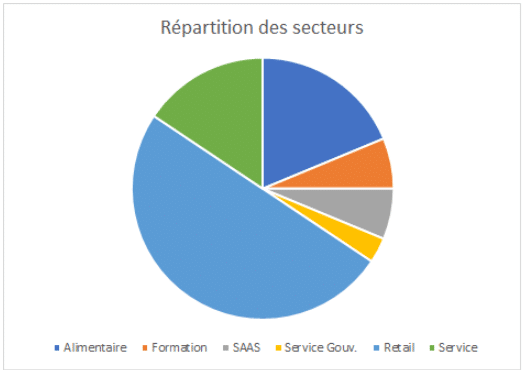
By extracting consumer data from Google Analytics and visualizing it, I was able to create the graph below. There is a (slow) growth in desktop traffic on all of our clients' properties. So far, my guess holds true.
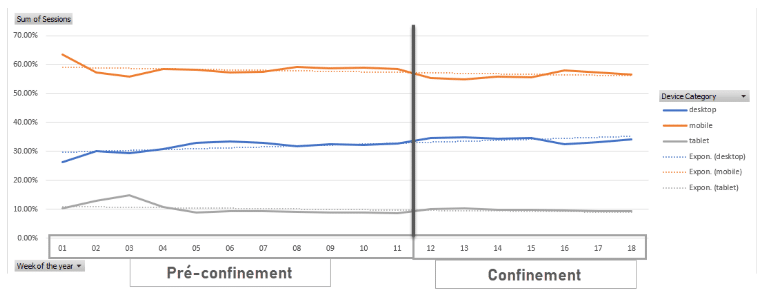
The vertical axis represents the percentage of traffic (in sessions) generated by the different user devices. This methodology excludes volume biases by vertical/customer and provides an overview of user behaviors. Using the session-based percentage also rules out the bias of using multiple devices at home at the same time.
But let's go further.
Once the data of all customers in the sample have been aggregated, we observe the following variation between the period before the confinement (January 1 to March 13) and that after the start of the confinement (March 14 to April 1).
- Desktop: Sessions ratio increased by 8%
- Mobile: Reduction of the session ratio by 3%
- Tablet: Reduction of the session ratio by 5%
Although the variation is not huge, there is nevertheless some behavioral modification among users. On the other hand, if we isolate only the data from the last few weeks in lockdown, this change in the preferred device remains very stable.
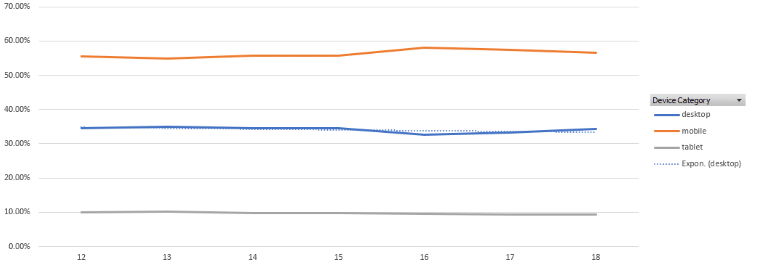
We can therefore conclude that a change in habits caused by confinement among a large proportion of Quebecers influenced their choice of web browsing devices.
SOME SECTORS ARE MORE AFFECTED THAN OTHERS
After classifying the sample data by broad verticals, very clear trends emerge.
Variation in user behavior by device type by industry
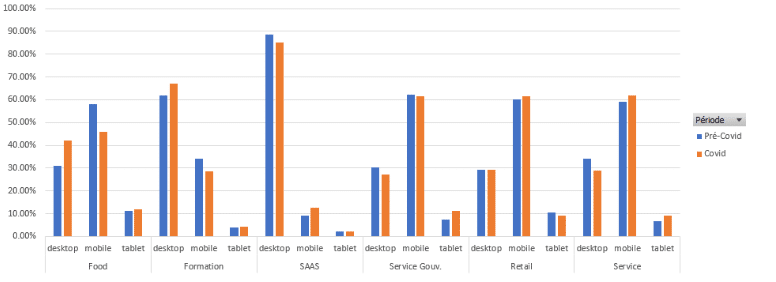
Unsurprisingly, food is the sector most affected by the behavioral change of users. According to my analysis, the percentage of traffic per device has changed significantly over the past few weeks. Food businesses saw an average increase of 36% in sessions from computers (this traffic now stands at 42% of total traffic, up from 31% before the pandemic). The percentage of sessions coming from mobile has meanwhile decreased by 21% (46% of total traffic in these times of isolation, versus 58% before the pandemic).
Change in user behavior since the start of the year in the food sector
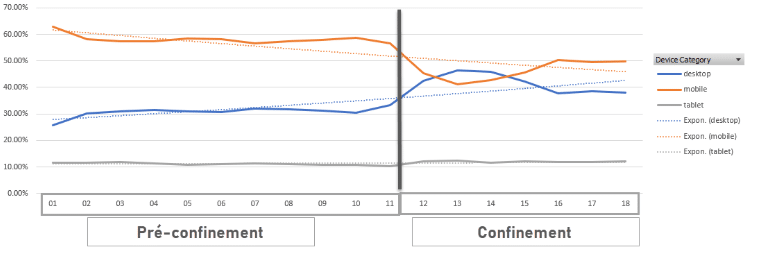
SOME THOUGHTS ABOUT THE FOOD INDUSTRY:
Could the drastic change in user behavior (36% increase in desktop traffic) be due to the fact that food companies were quickly overloaded with traffic, which in some cases completely blew up their site?
Since mobile versions are less stable and often slower, would they have encouraged users to use their home computers?
If you are thirsty to know more about the food industry in these times of pandemic, I advise you to watch our virtual aperitif on the subject , in the company of Jean-François Renaud (founding partner at Adviso) and Alain Dumas (former senior Sobeys executive and online grocery pioneer).
WHAT DOES THIS DATA MEAN?
External factors, like the lockdown situation, certainly affect how users browse the internet and interact with web properties.
In these times of change and transformation, it is more important than ever to track the behavior of your users through your analytical platforms like Google Analytics. As the situation is constantly changing, you may notice that behaviors fluctuate rapidly depending on contextual elements (we are thinking in particular of government announcements).
If you observe behavioral changes, for example a certain type of device, a certain page or even certain keywords causing a large volume of traffic, consider adapting your communication strategy and optimizing the user experience on your site. Whether through CRO (Conversion Rate Optimization) for pages with more visits, optimization of organic positioning (Search Engine Optimization) for keywords and themes that record search growth, or the redefinition of strategies media depending on the volume of use of different digital channels, several methods allow you to remain agile.
What will happen when the lockdown is lifted? Will we see a return to “normal” at the level of the device preferred by users? My guess is between yes and no.
Yes, because consumers are going to start going out again and using their cell phones for quick on-the-go searches.
No, because some users will have become accustomed to carrying out certain purchases on a certain device and may have discovered a more efficient way of carrying out this task. One thing is certain: shopping online is much more efficient on a computer (search module, keyboard and mouse) than on a mobile phone with a 7-inch screen!









